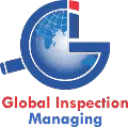Introduction
Cambodia has rapidly ascended as a prominent player in the global garment and textile manufacturing industry. Its strategic location, competitive labor costs, and favorable trade agreements have attracted numerous international brands seeking efficient and cost-effective production solutions. However, as the industry expands, maintaining stringent quality control (QC) standards becomes imperative to ensure product excellence and sustain growth.
Overview: Cambodia’s Garment & Textile Manufacturing Landscape
The Cambodian garment and textile sector has experienced significant growth over the past two decades, positioning the country as one of the largest garment exporters in the world. The industry encompasses a wide range of products, including apparel, footwear, and home textiles, catering to diverse international markets. This expansion is driven by factors such as:
• Competitive Labor Costs: Affordable wages attract foreign investment and facilitate cost-effective production.
• Trade Agreements: Preferential trade agreements, such as the Everything But Arms (EBA) initiative with the European Union, provide duty-free access to key markets.
• Skilled Workforce: An increasing number of skilled workers and technicians contribute to enhanced production capabilities.
Why Global Brands Are Sourcing from Cambodia
International brands are increasingly turning to Cambodia for their manufacturing needs due to several compelling reasons:
• Cost Efficiency: Competitive labor and operational costs lead to reduced production expenses.
• Speed to Market: Proximity to major markets in Asia and Europe enables faster shipping times.
• Compliance with Ethical Standards: Cambodia’s commitment to improving labor conditions aligns with the ethical sourcing policies of many global brands.
Also Read – Why Cambodia is becoming a major manufacturing hub
The Role of Quality Control in Sustaining Growth
As Cambodia’s garment and textile industry continues to expand, implementing robust quality control measures is essential to maintain product standards and meet international expectations. Quality control plays a pivotal role in:
• Ensuring Product Consistency: Regular inspections and testing ensure that products meet predefined specifications and quality benchmarks.
• Building Brand Reputation: Consistent product quality enhances brand credibility and fosters customer loyalty.
• Reducing Defects and Returns: Proactive quality control minimizes defects, leading to fewer returns and increased customer satisfaction.
A. Pre-Production Stage: Factory Audits & Supplier Verification
1. Factory Audits: Conduct comprehensive assessments of manufacturing facilities to evaluate their capabilities, compliance with labor laws, and adherence to environmental standards.
2. Supplier Verification: Assess potential suppliers’ financial stability, production capacity, and commitment to quality to ensure they align with your brand’s standards.
B. In-Production Stage: Inline & Process Inspections
1. Inline Inspections: Perform inspections during the production process to identify and address defects early, preventing the escalation of issues.
2. Process Monitoring: Utilize real-time monitoring systems to track production parameters and ensure consistent quality throughout the manufacturing process.
C. Post-Production Stage: Final & Shipment Inspections
1. Final Inspections: Conduct thorough evaluations of finished products to verify compliance with quality standards and specifications.
2. Shipment Inspections: Inspect packaging and labeling to ensure products are ready for export and meet destination market requirements.
Quality Control Challenges in Cambodia’s Textile Sector
Despite its growth, Cambodia’s textile industry faces several quality control challenges:
• Inconsistent Standards: Variations in quality control practices across different factories can lead to product inconsistencies.
• Supply Chain Complexity: Managing a diverse supplier base increases the risk of quality issues and requires diligent oversight.
• Regulatory Compliance: Ensuring adherence to both local and international regulations necessitates continuous monitoring and adaptation.
How Quality Control Drives Sustainable and Ethical Sourcing
Implementing effective quality control measures not only ensures product excellence but also promotes sustainable and ethical sourcing practices:
• Environmental Responsibility: Adhering to environmental standards reduces waste and minimizes the ecological footprint of manufacturing operations.
• Social Compliance: Upholding fair labor practices and safe working conditions aligns with ethical sourcing commitments and enhances brand reputation.
GIM’s Role in Ensuring Quality and Compliance in Cambodia
Global Inspection Managing (GIM) plays a crucial role in supporting businesses operating in Cambodia’s garment and textile sector:
• Comprehensive Inspection Services: GIM offers a range of services, including product inspections, factory audits, and lab testing, tailored to the specific needs of the garment industry.
• Expertise in Cambodian Manufacturing: With extensive experience in Cambodia, GIM provides insights into local manufacturing practices and regulatory requirements.
• Real-Time Reporting: GIM delivers timely and detailed reports, enabling businesses to make informed decisions and address issues promptly.
Which Country Is Better for Quality-Focused Buyers?
While Cambodia offers numerous advantages, including cost efficiency and a growing skilled workforce, businesses must weigh these benefits against potential challenges such as quality control inconsistencies and supply chain complexities. Implementing robust quality control measures and partnering with experienced third-party inspection services like GIM can mitigate these challenges and ensure product excellence.
Conclusion
Cambodia’s emergence as a leading garment and textile manufacturing hub presents significant opportunities for global brands. However, sustaining growth and maintaining product quality require a steadfast commitment to quality control at every stage of the production process. By leveraging comprehensive inspection services and adhering to stringent quality standards, businesses can navigate the Cambodian manufacturing landscape effectively and uphold their brand’s reputation for excellence.
FAQs
Cambodia’s competitive labor costs, favorable trade agreements, and skilled workforce contribute to its rise as a prominent garment manufacturing destination.
Effective quality control ensures that Cambodian textile products meet international standards, enhancing their appeal in global markets and reducing the risk of returns.
Factories may encounter challenges such as inconsistent quality control practices, supply chain complexities, and the need to comply with both local and international regulations.
Third-party inspections provide unbiased assessments of manufacturing processes, identify potential issues early, and ensure compliance with quality standards, leading to improved product quality.
GIM offers comprehensive inspection services, including product inspections, factory audits, and lab testing, tailored to the specific needs of the Cambodian garment industry, ensuring quality and compliance.
By understanding these aspects and partnering with reputable inspection services, businesses can make informed decisions and maintain high-quality standards in their products.
